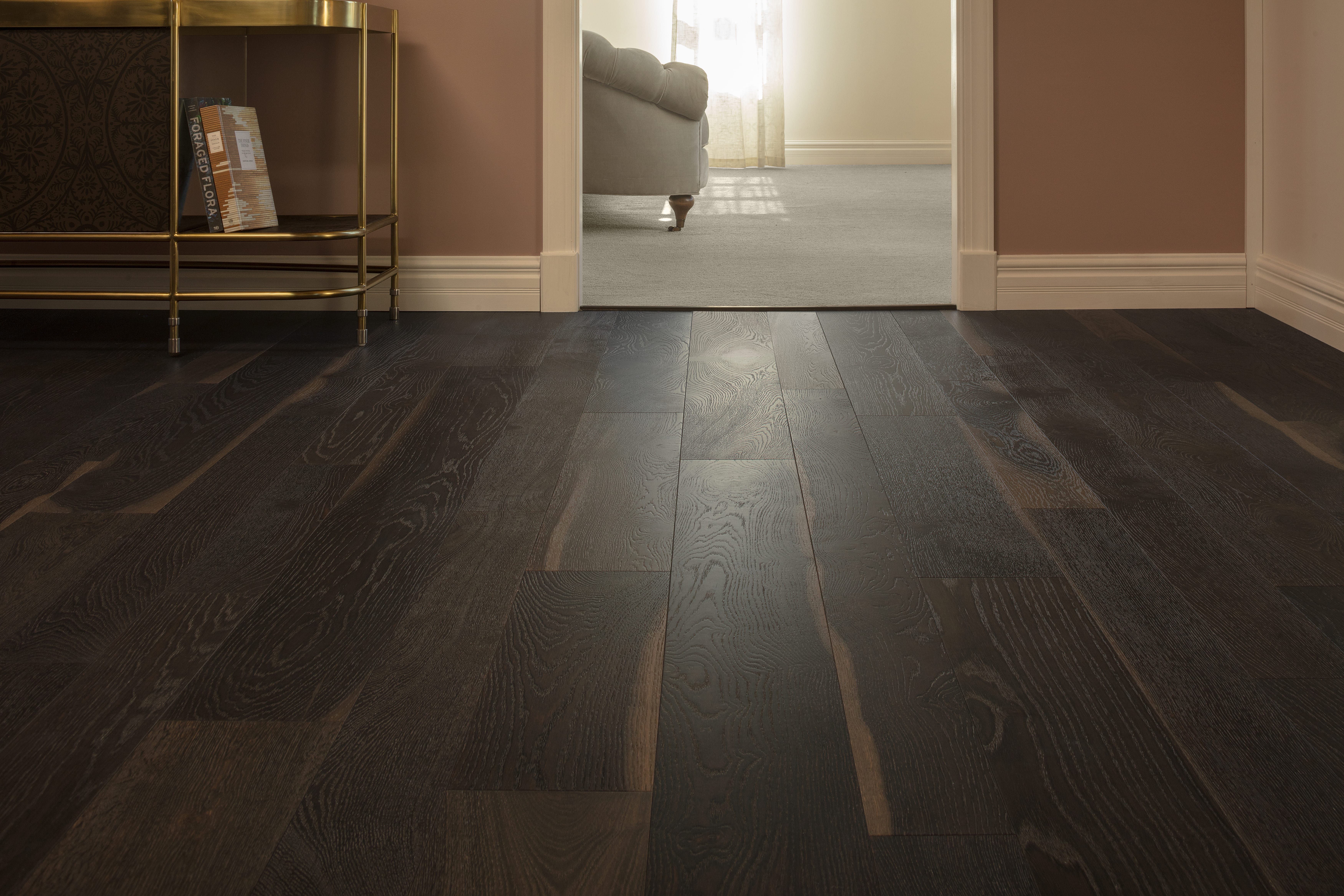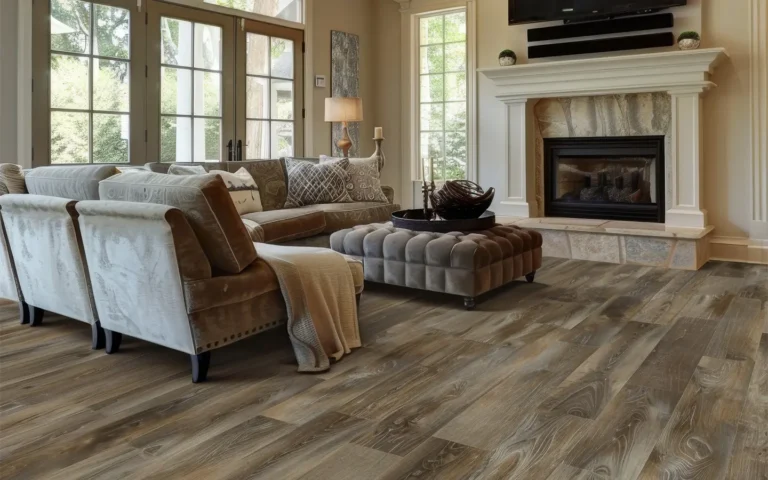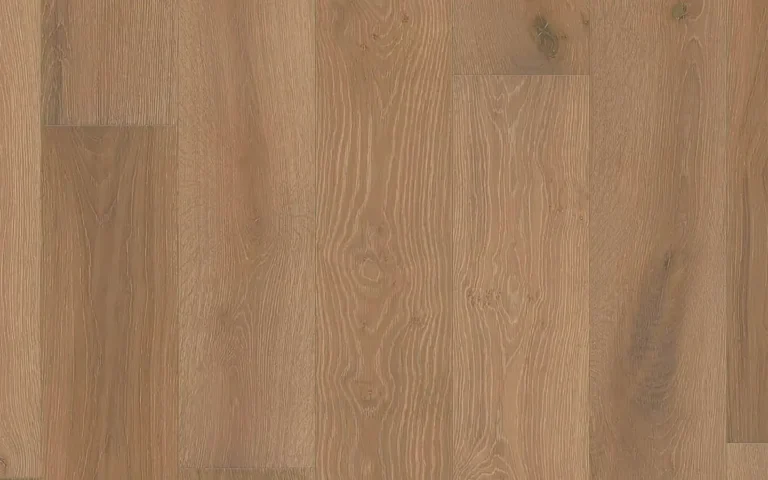Hardwood flooring is a huge category. If you’re thinking about putting hardwood floors in your home, there’s so much to consider. In addition to species, plank size, cut, and tone, you’ll also have to decide which type of hardwood flooring you want – solid or engineered.
While both are available in a variety of styles, species, and finishes, each product has its own unique features, benefits, and installation options. Once you have a better understanding of the nuances of solid and engineered flooring, you’ll have an easier time deciding which product is right for you.
Solid hardwood
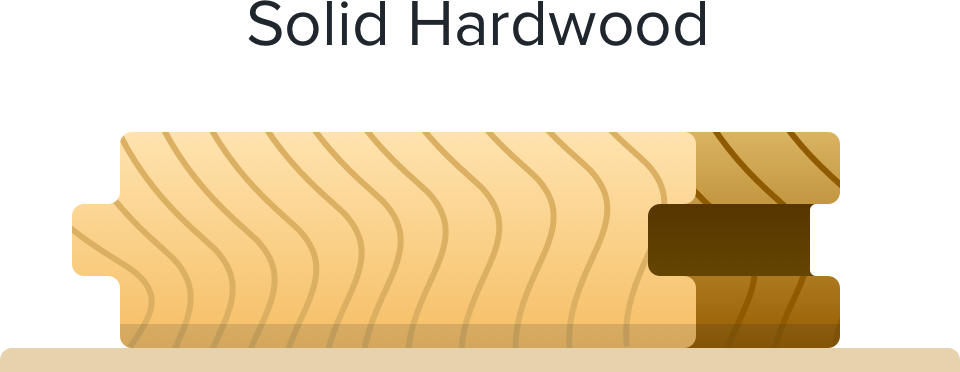
Solid hardwood is exactly what it sounds like – a solid plank of wood all the way through. It’s typically between 5/16 and ¾ of an inch thick. It can be sanded and refinished multiple times, making it a long-lasting flooring option.
Best Brands of 2024
Visuals
Solid hardwood planks tend to be a bit less wide than their engineered counterparts. In general, solid hardwood planks shouldn’t be wider than 5 inches. Most solid hardwood planks are anywhere from 2.25 to 5 inches wide.
You can find solid hardwood flooring in a variety of species, but the most common species sold in the U.S. are red oak, white oak, and maple.
Installation
Solid hardwood flooring is generally installed by nailing the planks to the subfloor. It also requires an acclimation period before being installed. Unless you have a lot of previous experience putting in new floors, we recommend hiring a professional to install your solid hardwood floors.
Solid hardwood is susceptible to moisture damage as well as expansion and contraction due to temperature or humidity changes. As a result, it should never be installed in areas like bathrooms or below-grade – meaning, in your basement.
Engineered hardwood
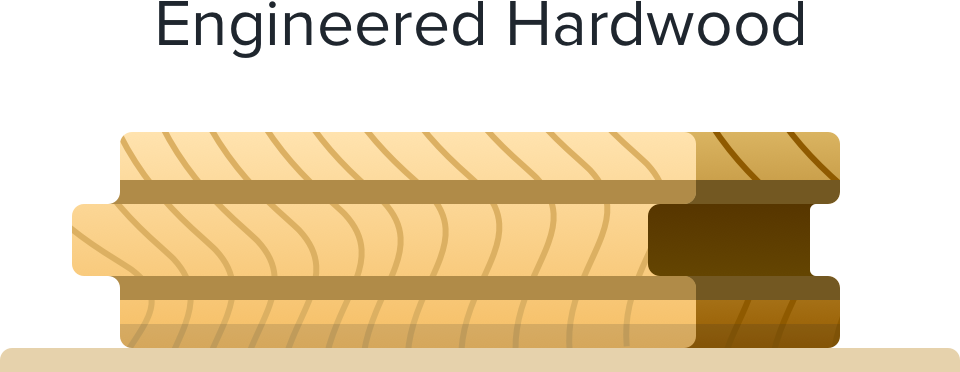
Engineered hardwood features a hardwood top layer, or veneer, glued to a core. The core is usually either high density fiberboard or plywood lumber. Its construction makes it less susceptible to changes in temperature and humidity, so it can be installed in places where solid hardwood can’t go, like basements, or over radiant heating or concrete subfloors.
Visuals
Just like solid hardwood, engineered planks are available in a variety of species, stains, or grading.
Engineered hardwood planks are about ⅜ to ½ inch thick, meaning they can be refinished if needed, just not as many times as solid hardwood. Engineered hardwood also offers more of a variety in terms of plank width, with some planks reaching up to 9 inches wide.
Installation
There are a few different ways to install engineered hardwood. Depending on the product, it can be stapled, glued, or installed using a tongue and groove system. Floors installed with tongue and groove systems are generally easier to install than those that use either glue or staples. If you’re a handy DIYer, engineered hardwood that uses a tongue and groove system could be a great option for you.
While its stability means it can be installed in places where solid hardwood cannot, it’s still susceptible to water damage, and may not be the best choice for places where flooding or spilling could be an issue. You shouldn’t use a wet mop on engineered hardwood floors, either, and spills should be wiped up as quickly as possible.
Ready to find your perfect hardwood floors? Click here to get started!
About The Author

Lauren Moore
February 8, 2019
Proud flooring aficionado and office dog mom, "Flauren" has been a professional writer and editor for more than a decade (though she still maintains her magnum opus was "The Day it Snowed Slurpees," written at the age of 6).
